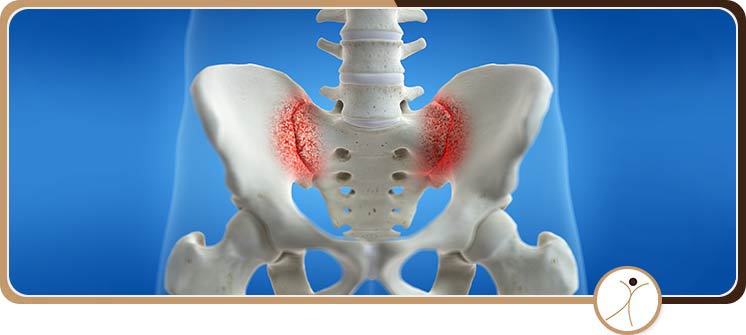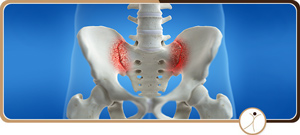Sacroiliitis: How to Recognize and Manage This Painful Condition
Sacroiliitis causes pain in the lower back and buttocks, often worsening with prolonged sitting or standing. It can mimic other conditions, making an accurate diagnosis by a doctor crucial, often with physical tests and injections. Visit Dr. George Atallah, D.O., to confirm the SI joint as the source of your pain. For more information, contact us or book an appointment online. We have convenient locations to serve you in Houston TX and Sugar Land TX.


Table of Contents:
What are the early warning signs of sacroiliitis that can help with early detection?
How can sacroiliitis pain be differentiated from other lower back or hip pain conditions?
What role does inflammation play in sacroiliitis, and how does it affect the joints?
Can sacroiliitis lead to long-term complications if left untreated, and how can they be prevented?
Sacroiliitis is an inflammation of the sacroiliac joints, where your lower spine meets your pelvis. Early recognition and prompt, expert intervention are crucial to managing sacroiliitis effectively and preventing long-term complications.
Sacroiliitis can be challenging to identify in its early stages. The symptoms often mimic more common conditions like muscle strains or general lower back pain. However, recognizing the unique features of sacroiliitis can help guide you to seek specialized care:
Lower Back, Buttock, or Leg Pain: One of the first signs is a dull ache in the lower back, buttocks, or radiating down the legs. This pain typically worsens after periods of inactivity. Many patients notice improvement with gentle movement or activity.
Morning Stiffness: Stiffness in the lower back and hips, especially in the morning or after resting, is another common early symptom. Unlike typical soreness, this stiffness may last more than 30 minutes and gradually ease as the day progresses.
Tenderness and Swelling: You may notice tenderness around the sacroiliac joints, especially when climbing stairs, standing up, or walking. Some individuals also experience warmth or mild swelling in the affected area.
Radiating Pain: Sometimes, the pain spreads to the groin, thighs, or upper legs, which can be mistaken for sciatica or hip issues.
Other Symptoms: In more severe cases, you may also feel a mild fever, fatigue, or a general sense of malaise.
These early signs can easily be mistaken for other musculoskeletal issues, and people often delay seeking help. However, if your pain or stiffness lasts more than a few weeks, worsens over time, or is accompanied by swelling or prolonged morning stiffness, it’s important to consult with a pain specialist.
Sacroiliitis often presents as a deep, aching discomfort in the lower back, buttocks, or the upper part of the back of the thighs. Unlike sciatica, which radiates pain below the knee due to nerve root involvement, sacroiliitis pain generally stays above the knee. Patients frequently report that the pain worsens with prolonged standing, climbing stairs, running, or even transitioning from sitting to standing. This is distinct from mechanical lower back pain (such as lumbar strain or degenerative disc disease), which is often more localized and less likely to radiate into the buttocks or groin.
Sacroiliitis often causes morning stiffness or stiffness after prolonged inactivity, which tends to improve with movement. This inflammatory pattern helps differentiate it from mechanical back pain, which typically worsens with activity and improves with rest.
Personalized Assessment
Our pain specialists use advanced diagnostic techniques, including physical examination. These assessments help distinguish sacroiliitis from hip joint disorders, which usually cause groin pain aggravated by hip rotation, or from lumbar spine issues, which exhibit different pain patterns.
Diagnostic Imaging and Advanced Evaluation
When appropriate, we utilize state-of-the-art imaging modalities such as X-rays or MRI to confirm the diagnosis. Sacroiliitis may show joint space narrowing, sclerosis, or inflammation in the SI joints, distinct from findings in the lumbar spine or hip joints.
Our team is dedicated to differentiating sacroiliitis from other causes of lower back and hip pain, ensuring you receive the most effective, evidence-based care.
Inflammation plays a central role in sacroiliitis, a condition marked by inflammation of one or both sacroiliac joints, which connect the lower spine to the pelvis. When these joints become inflamed, the body initiates a complex immune response that leads to swelling, increased blood flow, and the accumulation of inflammatory cells within the joint tissue. This inflammatory process is responsible for the pain, stiffness, and tenderness many patients feel in their lower back and buttocks, especially after prolonged standing or periods of inactivity.
If left untreated, ongoing inflammation can damage the cartilage and supporting structures within the sacroiliac joints. This may cause the joint surfaces to deteriorate, reduce mobility, and, in severe cases, result in the formation of scar tissue or bony growths (ankylosis) that further restrict movement. Chronic inflammation not only perpetuates pain and dysfunction but can also significantly impact daily activities and overall quality of life. Without proper intervention, sacroiliitis may even lead to permanent joint changes and disability.
At Modern Pain Management, our primary goal is to address the underlying inflammation that drives sacroiliitis symptoms. We utilize the latest evidence-based treatments including targeted medications, minimally invasive procedures, and individualized physical therapy plans, to reduce inflammation, alleviate pain, and protect joint function.
At Modern Pain Management, we recognize that sacroiliitis, inflammation of one or both sacroiliac joints at the base of the spine, can lead to significant long-term complications if not properly treated. Sacroiliitis is often associated with systemic inflammatory conditions such as ankylosing spondylitis, further increasing the risk of spinal complications like reduced flexibility and postural changes.
Our multidisciplinary team specializes in the early recognition and comprehensive management of sacroiliitis to prevent long-term complications. At Modern Pain Management, we offer:
Advanced Diagnostic Techniques: Early and accurate diagnosis is essential. We utilize state-of-the-art imaging and clinical assessments to identify sacroiliitis and related conditions.
Personalized Treatment Plans: We tailor therapies to each patient’s needs, including nonsteroidal anti-inflammatory drugs (NSAIDs), targeted physical therapy, and, when appropriate, disease-modifying medications.
Interventional Pain Procedures: For patients with persistent symptoms, we provide image-guided injections and other minimally invasive interventions to reduce inflammation and relieve pain.
Comprehensive Lifestyle Support: Our team advises on maintaining a healthy weight, safe exercise routines, and strategies to avoid activities that may worsen sacroiliac joint stress.
Regular follow-ups allow us to track disease progression, adjust treatment plans, and ensure optimal outcomes for our patients. For more information, please contact us or book an appointment online. We have convenient locations to serve you in Houston TX and Sugar Land TX. We serve patients from Houston TX, Sugar Land TX, Pearland TX, Jersey Village TX, Missouri City TX, Stafford TX, and Richmond TX.
ADDITIONAL SERVICES YOU MAY NEED




